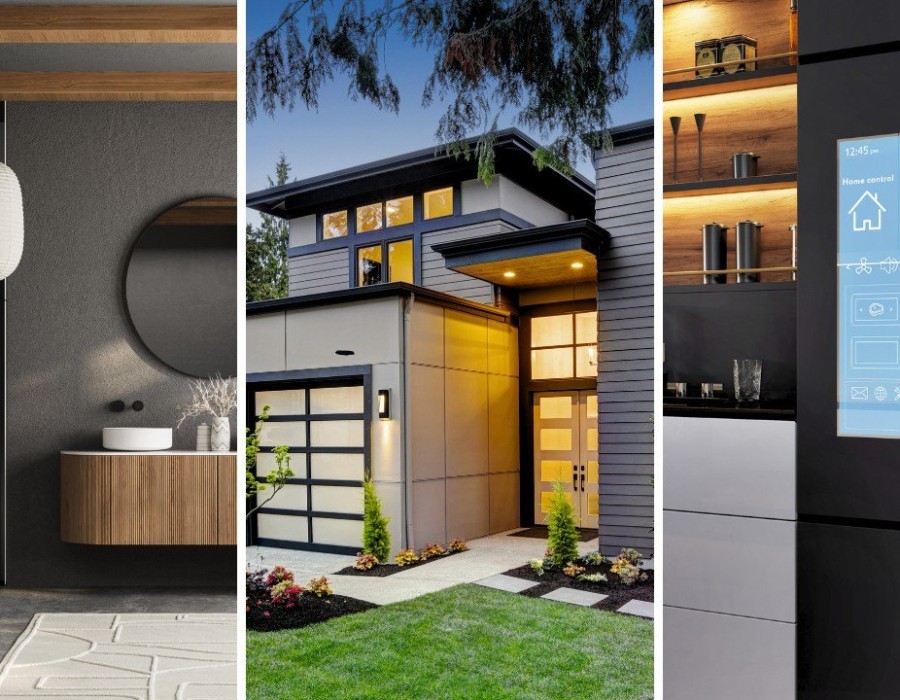In the fast-moving world of technology, our homes are becoming smarter, more efficient, and better connected. The rise of artificial intelligence, automation, and data integration has made home living more comfortable and secure than ever before. As we step into 2025, the smart home industry is set to reach new heights, introducing devices that not only simplify daily routines but also align with energy efficiency and sustainability goals.
Why Smart Homes Are the Future
Smart homes are no longer a luxury—they’re a necessity for those seeking comfort, convenience, and control. From voice-activated assistants to intelligent security systems, the way we interact with our living spaces is evolving rapidly. With 5G networks, IoT (Internet of Things), and AI becoming mainstream, 2025 will showcase a deeper integration of smart technologies into everyday life.
Key Trends in Smart Home Technology
Several innovations are shaping the smart home landscape this year. The most prominent trends include:
- Enhanced AI Integration: Devices are becoming more intuitive, learning from user behavior to automate tasks like lighting, climate control, and appliance use.
- Sustainable Tech: Solar-powered smart gadgets and energy-monitoring systems are gaining popularity among eco-conscious homeowners.
- Voice and Gesture Control: Control panels are being replaced with natural interactions—voice, facial recognition, or even hand gestures.
- Increased Interoperability: Different brands and systems now communicate seamlessly with each other through platforms like Matter and Thread.
- Security Upgrades: Biometric locks, real-time video alerts, and AI-based threat detection are setting new standards in home protection.
Top Smart Home Devices for 2025
Let’s explore some of the standout smart devices making waves this year:
1. Smart Thermostats with AI Learning
Modern thermostats are now capable of learning your schedule and adjusting temperature settings accordingly. This not only enhances comfort but also reduces energy consumption significantly.
2. AI-Powered Home Assistants
Devices like Amazon Echo and Google Nest have been upgraded with advanced AI that understands natural language better and integrates with more apps, making them true personal assistants.
3. Multi-Functional Smart Hubs
New smart hubs act as centralized controllers for all smart devices, allowing seamless automation from a single app or command center—whether it’s lighting, locks, or sensors.
4. Smart Refrigerators with Inventory Tracking
2025 models now come with internal cameras, sensors, and AI that not only track what’s inside but also suggest recipes and notify you when groceries are low.
5. Robot Vacuum Cleaners with 3D Mapping
Today’s robotic vacuums use 3D spatial awareness, obstacle detection, and even AI-based room recognition to clean your home more efficiently than ever.
6. Automated Curtains and Windows
Smart shades now adjust automatically based on the time of day or temperature, improving both comfort and energy efficiency. Some models are solar-powered and app-controlled.
7. Advanced Water Leak and Air Quality Sensors
Water and air quality sensors can now detect leaks or dangerous air pollutants early, sending alerts directly to your phone. These tools prevent costly repairs and health risks.
8. Next-Gen Smart Locks
New smart locks in 2025 come with fingerprint access, temporary guest codes, and integration with home monitoring systems, all controlled via smartphone.
9. Smart Mirrors with Built-In Health Tracking
Smart mirrors now display real-time health stats, weather updates, and even skincare analysis, combining wellness with technology in your daily routine.
10. Connected Kitchen Appliances
Ovens, coffee machines, and dishwashers are now equipped with Wi-Fi connectivity and app control, allowing you to preheat, brew, or wash from anywhere.
Energy Efficiency and Eco-Friendly Integration
Energy management is a critical part of smart living in 2025. Devices now focus on reducing carbon footprints through real-time monitoring, solar integration, and low-energy consumption. Smart power strips, energy-usage dashboards, and automation settings are helping homeowners take full control over their energy bills.
Security and Privacy Considerations
With the increase in smart devices comes the growing need for cybersecurity. Manufacturers in 2025 are now offering built-in encryption, two-factor authentication, and regular firmware updates to protect your data and home network. Privacy-conscious users are also opting for devices that allow local storage instead of cloud-based systems.
Accessibility and Inclusive Design
Smart home technology is also becoming more inclusive. Voice-command systems are beneficial for elderly users or individuals with disabilities. Devices are now designed with larger fonts, multi-language support, and more accessible user interfaces to ensure that everyone can benefit from a smart lifestyle.
Future-Proofing Your Smart Home
With so many devices entering the market, it’s important to plan for long-term integration. Opting for devices that support open ecosystems (like Matter) ensures that your system remains compatible with future innovations. Regular updates and investing in scalable hubs also help in future-proofing your smart home.
Real-World Application and Shopping Resources
Consumers looking to upgrade their homes often turn to reliable resources. One such example is inktwists.com, a platform known for exploring lifestyle and tech trends. Whether you’re a homeowner or renter, having the right insights can help you choose devices that truly enhance your lifestyle.
Conclusion
Smart home devices in 2025 go far beyond simple automation—they are shaping a future of comfort, efficiency, and safety. With AI-driven technology, enhanced energy management, and user-friendly designs, these innovations are transforming how we experience our homes. Investing in smart technology is no longer just about convenience—it’s a meaningful step toward a sustainable and secure future.





Comments